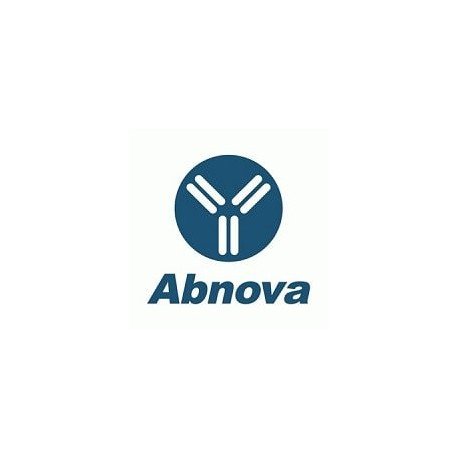Cart 0 Product Products (empty)
No products
To be determined Shipping
0,00 € Total
Prices are tax excluded
Product successfully added to your shopping cart
Quantity
Total
There are 0 items in your cart. There is 1 item in your cart.
Total products (tax excl.)
Total shipping (tax excl.) To be determined
Total (tax excl.)
Data sheet of SENP3 polyclonal antibody
| Brand | Abnova |
| Product type | Primary antibodies |
| Reactivity | Human |
| Host species | Rabbit |
| Applications | WB-Ce,IHC-P |
More info about SENP3 polyclonal antibody
| Brand: | Abnova |
| Reference: | PAB2416 |
| Product name: | SENP3 polyclonal antibody |
| Product description: | Rabbit polyclonal antibody raised against synthetic peptide of SENP3. |
| Gene id: | 26168 |
| Gene name: | SENP3 |
| Gene alias: | DKFZp586K0919|DKFZp762A152|SMT3IP1|SSP3 |
| Gene description: | SUMO1/sentrin/SMT3 specific peptidase 3 |
| Immunogen: | A synthetic peptide (conjugated with KLH) corresponding to N-terminus of human SENP3. |
| Protein accession: | NP_056485;Q9H4L4 |
| Form: | Liquid |
| Recommend dilutions: | Western Blot (1:1000) Immunohistochemistry (1:50-100) The optimal working dilution should be determined by the end user. |
| Storage buffer: | In PBS (0.09% sodium azide) |
| Storage instruction: | Store at 4°C. For long term storage store at -20°C. Aliquot to avoid repeated freezing and thawing. |
| Note: | This product contains sodium azide: a POISONOUS AND HAZARDOUS SUBSTANCE which should be handled by trained staff only. |
| Product type: | Primary antibodies |
| Host species: | Rabbit |
| Antigen species / target species: | Human |
| Reactivity: | Human |
| Application image: |  |
| Application image note: | (LEFT) Formalin-fixed and paraffin-embedded human cancer tissue reacted with the SENP3 polyclonal antibody (Cat # PAB2416) , which was peroxidase-conjugated to the secondary antibody, followed by AEC staining. This data demonstrates the use of this antibody for immunohistochemistry ; clinical relevance has not been evaluated. BC = breast carcinoma. (RIGHT) Formalin-fixed and paraffin-embedded human breast carcinoma tissue reacted with SENP3 polyclonal antibody (Cat # PAB2416) , which was peroxidase-conjugated to the secondary antibody, followed by DAB staining. This data demonstrates the use of this antibody for immunohistochemistry ; clinical relevance has not been evaluated. |
| Applications: | WB-Ce,IHC-P |
| Shipping condition: | Dry Ice |
| Publications: | SUMO, ubiquitin's mysterious cousin.Muller S, Hoege C, Pyrowolakis G, Jentsch S. Nat Rev Mol Cell Biol. 2001 Mar;2(3):202-10. |


